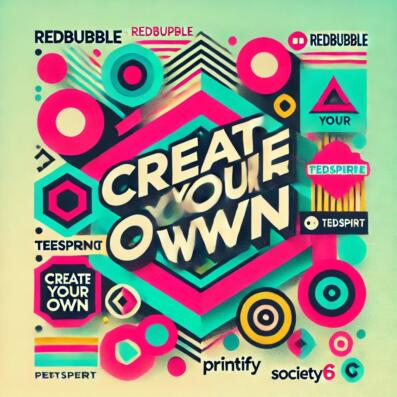Introduction
Print on Demand (POD) is one of the most popular business models for new entrepreneurs who want to start an online store with minimal upfront costs.
But, like any business, POD comes with its own set of pros and cons.
In this article, we’ll break down the major advantages and potential challenges of running a POD business so you can decide if it’s the right choice for you.
What is Print on Demand?
Before diving into the pros and cons, let’s quickly recap what POD is.
Print on Demand is a business model where you partner with a supplier to print custom products (such as T-shirts, mugs, and phone cases) only after you’ve sold them.
The supplier handles printing, packaging, and shipping, so you don’t need to deal with inventory or logistics.
The Pros of Running a Print on Demand Business
POD offers many benefits, especially for those just getting started in the eCommerce space.
Here are some key advantages:
1. Low Startup Costs
One of the biggest perks of POD is that you don’t need to invest in inventory upfront.
Since products are printed only after they’re sold, you can launch your business without having to buy stock or deal with storage costs.
2. No Inventory Management
With POD, you never have to worry about managing inventory or dealing with unsold products.
The supplier takes care of printing and shipping, so you can focus on designing and marketing your products.
3. Easy to Scale
Scaling a POD business is much easier than traditional eCommerce.
Whether you sell 10 items or 1,000, your workload remains largely the same since the printing and fulfillment are handled by your supplier.
This makes it a flexible option for those looking to grow their business without increasing operational complexity.
4. Wide Range of Customizable Products
POD gives you access to a variety of customizable products, from apparel and accessories to home decor and stationery.
You can easily create new designs and expand your product range without additional investment.
5. Less Risk
Because you don’t need to buy inventory upfront, POD is a low-risk business model.
If a product doesn’t sell well, you haven’t lost any money on unsold stock. You can simply remove the design and move on to something else.
The Cons of Running a Print on Demand Business
While POD has many advantages, it’s not without its challenges. Here are some of the potential downsides to consider:
1. Lower Profit Margins
Since the supplier handles the production and fulfillment, they take a significant cut from each sale.
This means POD products generally have lower profit margins compared to products you produce and ship yourself.
2. Less Control Over Shipping Times
POD suppliers are responsible for shipping, and depending on their location and fulfillment process, shipping times can vary.
If the supplier experiences delays, your customers might receive their orders later than expected, which could affect customer satisfaction.
3. Limited Product Customization
While POD allows for custom designs, you’re limited by the product catalog offered by the supplier.
If you want to sell something unique that isn’t available through POD platforms, you’ll have to look for alternative suppliers or consider other business models.
4. Quality Control Issues
Since you don’t handle the production process, you’re relying on your supplier to maintain quality standards.
While most reputable POD companies offer high-quality printing, there’s always a risk of inconsistent product quality or printing errors, which can lead to customer complaints and returns.
5. Competitive Market
The POD market is highly competitive, especially for common products like T-shirts and mugs.
Standing out can be challenging unless you have unique designs or a strong niche following.
Without a solid marketing strategy, it can be difficult to attract customers and make consistent sales.
Pros and Cons of Print on Demand
| Aspect | Pros | Cons |
|---|---|---|
| Startup Costs | Low, no inventory needed | None |
| Inventory Management | Supplier handles fulfillment | None |
| Profit Margins | No upfront product costs | Lower profit margins |
| Shipping Control | Supplier handles shipping | Less control over shipping times |
| Product Range | Wide range of products | Limited by supplier catalog |
Final Thoughts
Print on Demand is a fantastic business model for those looking to start an eCommerce store with low risk and minimal upfront costs.
It’s easy to set up, doesn’t require inventory management, and allows for creativity with custom designs.
However, like any business, it comes with its own set of challenges, such as lower profit margins, limited control over shipping, and competition in a crowded market.
Ultimately, POD is best suited for entrepreneurs who want to focus on design and marketing without worrying about the logistics of production and fulfillment.
FAQs
1. Is POD profitable?
Yes, POD can be profitable if you focus on unique designs, target the right audience, and market your products effectively. However, profit margins may be lower due to supplier fees.
2. Do I need design experience to run a POD store?
No! You can use tools like Canva to create simple designs or hire freelance designers from platforms like Fiverr.
3. How do I choose the right POD supplier?
Look for suppliers that offer the products you want to sell, have good reviews, and provide reasonable shipping times. Popular platforms include Printful and Printify.
4. What are the best-selling POD products?
Custom T-shirts, hoodies, mugs, and phone cases are some of the best-selling POD products due to their wide appeal and versatility.
5. Can I sell POD products on marketplaces like Etsy or Amazon?
Yes, many POD platforms integrate with marketplaces like Etsy and Amazon, allowing you to expand your reach and sell to a broader audience.
Best Print on Demand Platforms Printful vs PrintifyBenjamin Shemesh is an ecommerce enthusiast and a digital marketing expert.
He loves surfing the ocean
